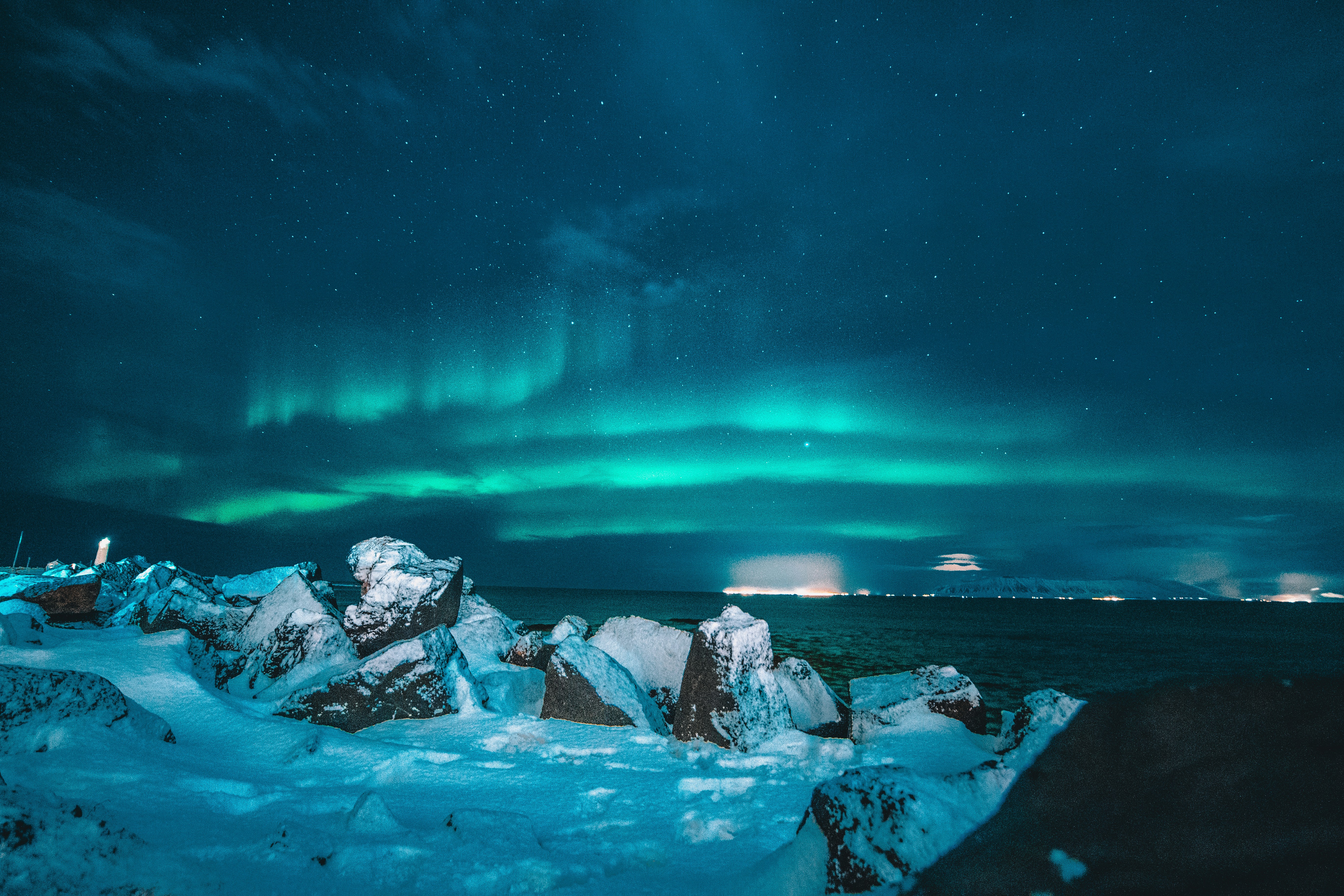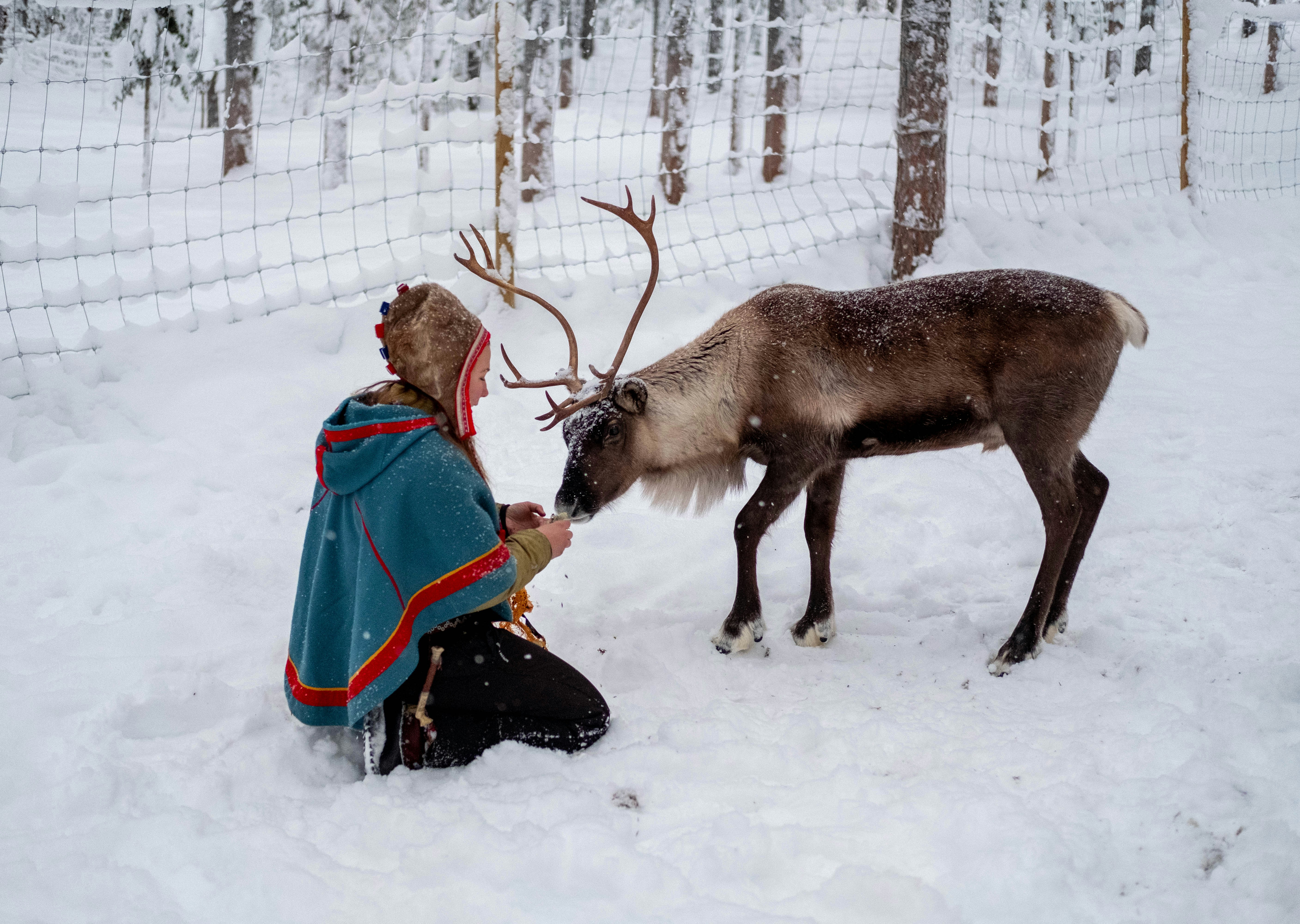What Are Northern Lights: Complete Guide to Aurora Borealis Phenomenon
Discover what northern lights really are with this complete scientific explanation of aurora borealis formation, colors, patterns, and cultural significance.
What Are Northern Lights: Complete Guide to Aurora Borealis Phenomenon
The northern lights, scientifically known as aurora borealis, represent one of Earth's most spectacular natural phenomena—a celestial light show created by the interaction between solar particles and our planet's magnetic field and atmosphere. Understanding what northern lights truly are reveals a fascinating story of cosmic forces, electromagnetic fields, and atmospheric chemistry working together to create the dancing curtains of light that have captivated humanity for millennia.
Scientific Definition of Northern Lights
The Basic Aurora Phenomenon
Northern Lights Definition: Northern lights are luminous atmospheric phenomena occurring in the Arctic and sub-Arctic regions, created when electrically charged particles from the sun collide with gases in Earth's upper atmosphere, causing those gases to emit light of various colors.
Scientific Classification:
- Type: Atmospheric optical phenomenon
- Location: Thermosphere and exosphere (80-400 km altitude)
- Cause: Solar particle interaction with atmospheric gases
- Frequency: Cyclical, following 11-year solar activity patterns
- Visibility: Requires dark skies and clear weather conditions
Alternative Names:
- Aurora Borealis: Scientific term coined by Galileo in 1619
- Northern Lights: Common English designation
- Polar Aurora: General term including both hemispheres
- Aurora: Simplified scientific reference
- Regional Names: Various cultural terms across Arctic peoples
The Aurora System Components
Essential Elements Creating Northern Lights:
- Solar Wind: Stream of charged particles from the sun
- Earth's Magnetosphere: Protective magnetic field around our planet
- Atmospheric Gases: Oxygen and nitrogen in the upper atmosphere
- Energy Transfer: Collision process creating light emission
- Magnetic Field Lines: Pathways guiding particles to polar regions
The Science Behind Aurora Formation
Solar Wind and Particle Source
What Creates the Solar Wind: The sun continuously emits a stream of charged particles—primarily electrons and protons—traveling through space at speeds of 400-800 kilometers per second. This solar wind carries pieces of the sun's magnetic field and varies in intensity based on solar activity.
Solar Activity Variations:
- Quiet Periods: Steady, low-intensity solar wind
- Solar Flares: Sudden bursts of electromagnetic energy
- Coronal Mass Ejections: Massive clouds of plasma and magnetic field
- Solar Storms: Enhanced particle streams creating stronger aurora
- Solar Cycles: 11-year patterns of increasing and decreasing activity
Earth's Magnetic Shield
The Magnetosphere: Earth's magnetic field creates an invisible protective bubble extending thousands of kilometers into space. This magnetosphere deflects most solar wind particles but also creates the conditions necessary for aurora formation.
Magnetosphere Structure:
- Bow Shock: Where solar wind first encounters Earth's magnetic field
- Magnetopause: Boundary between solar wind and magnetosphere
- Plasma Sheet: Region where particles are stored and accelerated
- Field Lines: Magnetic pathways converging at the poles
- Aurora Oval: Ring-shaped region where aurora typically occurs
Atmospheric Interaction and Light Production
The Collision Process: When solar particles enter Earth's atmosphere along magnetic field lines, they collide with oxygen and nitrogen atoms at altitudes between 80-400 kilometers, transferring energy that causes these atoms to emit light.
Energy Transfer Mechanism:
- Particle Entry: Charged particles follow magnetic field lines toward poles
- Atmospheric Collision: Particles strike oxygen and nitrogen atoms
- Energy Absorption: Atoms absorb energy from particle impacts
- Excited State: Atoms temporarily hold extra energy
- Light Emission: Atoms release excess energy as visible light photons
Aurora Colors and Their Scientific Origins
Primary Aurora Colors
Green Aurora (557.7 nanometers):
- Gas Source: Oxygen atoms at 100-300 km altitude
- Frequency: Most common aurora color (90%+ of displays)
- Appearance: Bright green curtains and arcs
- Energy Level: Moderate particle energy creating this emission
- Visibility: Easily visible to human eyes under dark conditions
Red Aurora (630.0 nanometers):
- Gas Source: Oxygen atoms at 300+ km altitude
- Frequency: Rare, occurring only during intense geomagnetic activity
- Appearance: Deep red coloring often at aurora tops
- Energy Level: High-energy particles required for this altitude
- Visibility: Striking when present, indicating exceptional aurora activity
Blue/Purple Aurora (427.8 nanometers):
- Gas Source: Nitrogen molecules at 80-100 km altitude
- Frequency: Less common, requires specific conditions
- Appearance: Blue or purple coloring, often at aurora bottom edges
- Energy Level: Very high energy particles penetrating lower atmosphere
- Visibility: Often mixed with other colors in complex displays
Pink Aurora:
- Gas Source: Combination of red oxygen and blue nitrogen
- Frequency: Occasional during moderate to high activity
- Appearance: Delicate pink hues often at aurora borders
- Energy Level: Mixed energy conditions creating color combination
- Visibility: Subtle but beautiful when atmospheric conditions align
Color Factors and Variations
Altitude-Dependent Coloring:
- High Altitude (300+ km): Red oxygen emissions
- Medium Altitude (100-300 km): Green oxygen emissions
- Low Altitude (80-100 km): Blue/purple nitrogen emissions
- Multi-Altitude: Complex displays showing multiple colors simultaneously
- Atmospheric Density: Affects which gases can be excited at each level
Intensity-Related Changes:
- Weak Aurora: Predominantly green with possible pink edges
- Moderate Aurora: Green with blue/purple lower borders
- Strong Aurora: Multiple colors including rare reds
- Extreme Aurora: Full spectrum including unusual color combinations
- Substorm Events: Rapid color changes during magnetic disturbances
Aurora Shapes and Patterns
Common Aurora Formations
Aurora Arcs:
- Structure: Smooth, curved bands stretching across the sky
- Formation: Aligned along magnetic field lines
- Stability: Can remain visible for hours with minimal change
- Frequency: Most common aurora form during quiet to moderate activity
- Viewing: Excellent for photography and extended observation
Aurora Rays:
- Structure: Vertical columns of light extending upward
- Formation: Particle streams following field lines precisely
- Movement: Often showing rapid flickering or dancing
- Appearance: Can create dramatic perspective effects
- Significance: Indicates active particle precipitation
Aurora Curtains:
- Structure: Flowing, sheet-like displays resembling fabric
- Formation: Multiple parallel rays creating curtain effect
- Movement: Graceful flowing motion across the sky
- Beauty: Most aesthetically impressive aurora form
- Photography: Excellent subject for time-lapse imaging
Aurora Corona:
- Structure: Rays appearing to converge overhead
- Formation: Observer positioned beneath aurora convergence point
- Rarity: Occurs only during high activity when aurora reaches zenith
- Experience: Most dramatic aurora viewing experience possible
- Perspective: Creates sense of being inside the aurora phenomenon
Dynamic Aurora Behavior
Pulsating Aurora:
- Pattern: Rhythmic brightening and dimming
- Timing: Cycles typically lasting seconds to minutes
- Mechanism: Particle injection variations creating rhythm
- Appearance: Breathing or heartbeat-like visual effect
- Science: Provides insights into magnetosphere dynamics
Aurora Breakup:
- Event: Sudden dramatic increase in aurora activity
- Appearance: Explosive brightening and rapid movement
- Duration: Typically 30-60 minutes of intense activity
- Trigger: Magnetic substorm events in Earth's magnetosphere
- Experience: Most exciting aurora viewing opportunity
Geographic Distribution and Occurrence
The Aurora Oval
Auroral Zone Definition: Aurora activity concentrates in an oval-shaped region around the magnetic poles, typically spanning latitudes from 65-72°N during quiet conditions and expanding during active periods.
Oval Characteristics:
- Center: Offset from geographic poles toward magnetic poles
- Size: Varies with geomagnetic activity (KP index)
- Shape: Elongated oval roughly 4,000 km in diameter
- Movement: Rotates with Earth while maintaining solar orientation
- Expansion: Grows larger during solar storms
Global Aurora Visibility:
- Always Visible: High Arctic locations (70°N+) during aurora season
- Frequently Visible: Aurora zone locations (65-70°N)
- Occasionally Visible: Sub-Arctic locations (55-65°N) during high activity
- Rarely Visible: Mid-latitude locations (45-55°N) during geomagnetic storms
- Extremely Rare: Lower latitudes during severe space weather events
Seasonal Aurora Patterns
Aurora Season:
- Northern Hemisphere: September through March
- Peak Activity: October-November and February-March (equinox periods)
- Winter Maximum: December-January with longest nights
- Summer Absence: Aurora occurs but invisible due to midnight sun
- Transition Periods: Gradual season beginning and ending
Daily Aurora Timing:
- Evening Peak: 9:00-11:00 PM statistical maximum
- Midnight Continuation: Aurora often persists through midnight hours
- Pre-Dawn Activity: Secondary peak 2:00-4:00 AM
- Magnetic Local Time: Activity peaks relative to magnetic midnight
- Duration: Individual displays can last minutes to many hours
Cultural and Historical Significance
Indigenous Aurora Knowledge
Sami Traditions (Northern Scandinavia):
- Guovssahas: Northern Sami term for northern lights
- Spiritual Significance: Energies of departed ancestors
- Practical Use: Navigation aid during polar night
- Cultural Stories: Oral traditions explaining aurora phenomena
- Modern Integration: Traditional knowledge informing contemporary understanding
Inuit Beliefs (Arctic North America):
- Aqsarniit: Inuktitut term for aurora
- Cultural Interpretation: Spirits playing with walrus skulls
- Practical Knowledge: Weather prediction using aurora patterns
- Storytelling: Aurora legends passed through generations
- Contemporary Relevance: Traditional knowledge supporting modern research
Scientific Discovery History
Ancient Observations:
- Aristotle (384-322 BCE): First recorded scientific aurora description
- Chinese Records: Aurora observations dating to 2600 BCE
- Medieval Chronicles: European documentation of unusual aurora events
- Age of Exploration: Arctic explorers documenting aurora phenomena
- Pre-Modern Understanding: Natural philosophy explanations
Modern Scientific Understanding:
- Galileo Galilei (1619): Coined term "aurora borealis"
- Kristian Birkeland (1896): Proposed particle theory of aurora formation
- Carl Størmer (1920s): Mathematical aurora modeling
- Space Age (1950s+): Satellite observations confirming theories
- Contemporary Research: Ongoing studies refining aurora understanding
Aurora Research and Monitoring
Modern Aurora Science
Research Methods:
- Ground-Based Observations: Networks of all-sky cameras and magnetometers
- Satellite Monitoring: Space-based aurora and solar wind measurements
- Rocket Studies: Direct atmospheric measurements during aurora events
- Theoretical Modeling: Computer simulations of aurora processes
- International Cooperation: Global research collaborations
Current Research Questions:
- Prediction Accuracy: Improving aurora forecasting capabilities
- Particle Acceleration: Understanding energy transfer mechanisms
- Atmospheric Chemistry: Aurora effects on upper atmosphere composition
- Climate Connections: Potential aurora relationships with weather patterns
- Space Weather: Aurora as indicator of dangerous space conditions
Technological Applications
Space Weather Monitoring:
- Satellite Protection: Aurora activity indicates radiation hazards
- Communication Systems: Aurora interference with radio transmissions
- Power Grid Effects: Geomagnetic activity affecting electrical systems
- GPS Accuracy: Aurora regions causing navigation errors
- Aviation Safety: Radiation exposure at high latitudes during aurora events
Educational and Cultural Value:
- STEM Education: Aurora inspiring scientific interest
- Tourism Industry: Aurora viewing supporting Arctic economies
- Cultural Preservation: Aurora knowledge maintaining indigenous traditions
- Public Engagement: Aurora connecting people to space science
- Artistic Inspiration: Aurora influencing art, literature, and music
Practical Aurora Information
Viewing Requirements
Essential Conditions:
- Dark Skies: Aurora invisible during daylight or bright twilight
- Clear Weather: Clouds completely block aurora visibility
- Northern Latitude: Best viewing above 60°N latitude
- Aurora Activity: Geomagnetic activity (KP index 2+ for northern locations)
- Minimal Light Pollution: Urban lights significantly reduce aurora visibility
Optimal Viewing Setup:
- Equipment: No special equipment required for basic viewing
- Comfort: Warm clothing for extended outdoor observation
- Patience: Aurora can appear and disappear throughout the night
- Photography: Camera can reveal aurora invisible to naked eye
- Safety: Cold weather precautions essential for aurora viewing
Common Aurora Misconceptions
Myth vs. Reality:
-
Myth: Aurora only occurs during winter
-
Reality: Aurora occurs year-round but is only visible during dark months
-
Myth: Aurora is rare and unpredictable
-
Reality: Aurora follows predictable patterns based on solar activity
-
Myth: You need special equipment to see aurora
-
Reality: Aurora is visible to naked eye under proper conditions
-
Myth: Aurora only appears directly north
-
Reality: Aurora can appear anywhere in northern sky, sometimes overhead
-
Myth: Aurora photography requires professional equipment
-
Reality: Modern cameras and smartphones can capture basic aurora images
Northern lights represent a perfect intersection of cosmic physics and earthly beauty, where invisible forces become visible spectacle. Understanding what northern lights are enhances appreciation for this natural wonder while connecting observers to the vast electromagnetic relationships governing our solar system.
Experience the wonder of northern lights firsthand and deepen your understanding of this incredible phenomenon during your stay at Lyngen Seaside, where perfect viewing conditions meet expert knowledge to create unforgettable aurora encounters.

